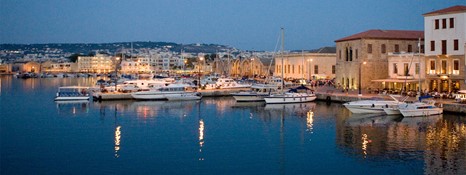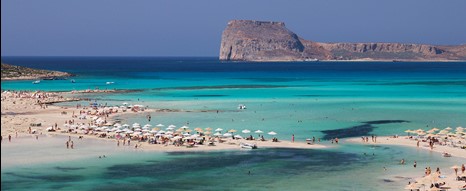12th International Conference of the Financial Engineering and Banking Society
Venue and Organization
The Conference was held at the Conference Center of the Mediterranean Agronomic Institute of Chania (MAICh), which is located 3 km south-east of the city of Chania. MAICh is easily accessible from the city center through regular bus service or taxis.
About Chania
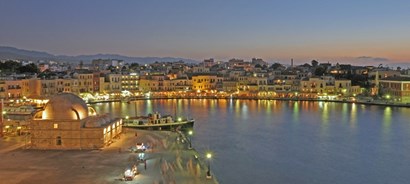 The city of Chania lies on the northwest coastline of the island of Crete. Being the largest of Greek islands, Crete has a significant contribution to the Greek economy and it is a major tourism and business center in the east Mediterranean region.
The city of Chania lies on the northwest coastline of the island of Crete. Being the largest of Greek islands, Crete has a significant contribution to the Greek economy and it is a major tourism and business center in the east Mediterranean region.
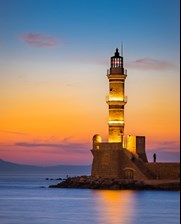 Chania is the second largest city in Crete with a population of approximately 100,000 inhabitants. Due to its natural beauty and variety of sights, Chania is among the leading tourist destinations not only in Greece but also in the whole Mediterranean area. The city of Chania constitutes a crossroad of civilizations and continents with a long history, natural beauty, unique architecture and rich tradition.
Chania is the second largest city in Crete with a population of approximately 100,000 inhabitants. Due to its natural beauty and variety of sights, Chania is among the leading tourist destinations not only in Greece but also in the whole Mediterranean area. The city of Chania constitutes a crossroad of civilizations and continents with a long history, natural beauty, unique architecture and rich tradition.
The main characteristic of the city is the Venetian port of the old city with the Egyptian lighthouse that has survived for many centuries and attracts the eye of residents and visitors. Venetian, Turkish, traditional and modern architecture coexist in harmony in the city of Chania, creating a unique and attractive scenery for the visitors. Archaeological sites, temples, squares and unique buildings adorn the attractive city of Chania. The old city of Chania constitutes a unique historical monument.
The district of Chania is characterized by its unique beauty with its sandy beaches (Balos beach, Elafonisi beach), gorges, caves, endemic plants and animals, vast olive and orange groves and a combination of wild landscapes and sea, it excites even the most hard-to-please visitors. In the mountainous inner parts, it hosts villages that have been forgotten by time, scattered churches and monasteries, towers and castles. The whole area is a particularly interesting archaeological site and simultaneously a paradise for wandering, mountain climbing and sports.
Technical University of Crete
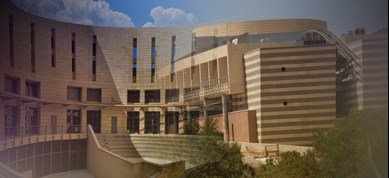 The Technical University of Crete (TUC) was founded in 1977 and admitted its first students in 1984. The Institution provides undergraduate and graduate studies in modern engineering fields. TUC is a young but dynamic University with a clear mission: to expand knowledge and benefit society through research integrated with education. In this endeavour, the pursuit of excellence is the driving force. Currently, there are more than 6,000 students at TUC, including approximately 900 post-graduate students and 300 PhD students.
The Technical University of Crete (TUC) was founded in 1977 and admitted its first students in 1984. The Institution provides undergraduate and graduate studies in modern engineering fields. TUC is a young but dynamic University with a clear mission: to expand knowledge and benefit society through research integrated with education. In this endeavour, the pursuit of excellence is the driving force. Currently, there are more than 6,000 students at TUC, including approximately 900 post-graduate students and 300 PhD students.
More than 50 laboratories with prime equipment, high technology infrastructure and eminently qualified personnel, as well as 120 faculty and staff members with international academic background attest to the level of excellence in education and research conducted at the University. TUC is a leading research institution ranking first among all Greek universities in research publications marking the highest citation score and exceeding the world average.
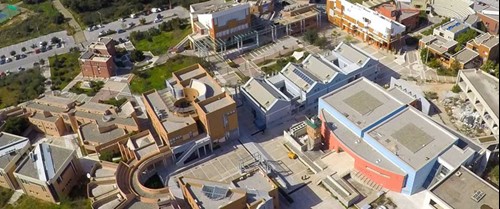
TUC has coordinated and participated in many national and EU research programs over the years. These include, among others, Horizon 2020, LIFE-environment programs, FP5 and FP6 and FP7 programs, National research programs funded by the General Secretariat for Research and Technology. Several research contracts are funded by industrial sponsors and many structural grants are funded by the Ministry of Education for fostering research. Moreover, TUC has created research clusters of excellence, that bring together a distinguished group of researchers with common research interests, allowing for meaningful ways to foster interdisciplinary and academic community collaboration, as well as to reinforce high-impact research in areas such as electrical and computer engineering, production engineering and management, environmental engineering, mineral resources engineering, and architecture.
Department of Economics, University of Crete
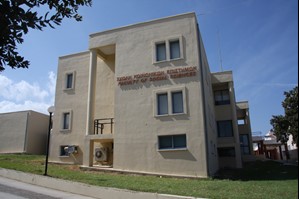 Located centrally on the north shore of the island of Crete, the University of Crete (UoC) has modern campus sites in two towns: the Faculties of Philosophy, Education and Social Sciences are based at the University Campus in Rethymnon, while the Physical, Technological, Mathematical and Life Sciences together with the Medical School are based at the University’s Heraklion Campuses.
Located centrally on the north shore of the island of Crete, the University of Crete (UoC) has modern campus sites in two towns: the Faculties of Philosophy, Education and Social Sciences are based at the University Campus in Rethymnon, while the Physical, Technological, Mathematical and Life Sciences together with the Medical School are based at the University’s Heraklion Campuses.
Established in 1973, the University accepted its first students in 1977-78. It now has 16 Departments in 5 Schools, as well as a number of affiliated research-oriented institutions, including the Skinakas Observatory, the Natural History Museum, and the University General Hospital. Currently, over 16,000 undergraduates and 2500 postgraduate students are registered at the University of Crete. They are educated by an outward-looking academic faculty of around 500 members, supported by adjunct lecturers, post-doctoral researchers, laboratory support staff and instructors, as well as around 300 technical and administrative support staff.
 The Department of Economics was established in April 1984 and admitted its first students in 1987. The Department has a high level of research and teaching standards in three specializations: 1. Economic Theory and Policy, 2. Business Economics and 3. Political Economy and Economic Development. Also, the undergraduate program offers the relevant quantitative tools of Statistics, Mathematics and Econometrics. The Department maintains three research units: 1. Laboratory of Ecological Economics and Sustainable Development, 2. Laboratory of Political Economy and Development and 3. Laboratory of Business Economics and New Technologies. Two distinct graduate programs are presently offered by the department: 1. MSc in Economic Theory and Policy and 2. MSc in Business Economics jointly with the University of Cyprus and Wageningen University. Since 2006 the Department has successfully run its Advanced Summer School in Economics and Econometrics and for 24 years an annual international conference on macroeconomic analysis and international finance.
The Department of Economics was established in April 1984 and admitted its first students in 1987. The Department has a high level of research and teaching standards in three specializations: 1. Economic Theory and Policy, 2. Business Economics and 3. Political Economy and Economic Development. Also, the undergraduate program offers the relevant quantitative tools of Statistics, Mathematics and Econometrics. The Department maintains three research units: 1. Laboratory of Ecological Economics and Sustainable Development, 2. Laboratory of Political Economy and Development and 3. Laboratory of Business Economics and New Technologies. Two distinct graduate programs are presently offered by the department: 1. MSc in Economic Theory and Policy and 2. MSc in Business Economics jointly with the University of Cyprus and Wageningen University. Since 2006 the Department has successfully run its Advanced Summer School in Economics and Econometrics and for 24 years an annual international conference on macroeconomic analysis and international finance.



